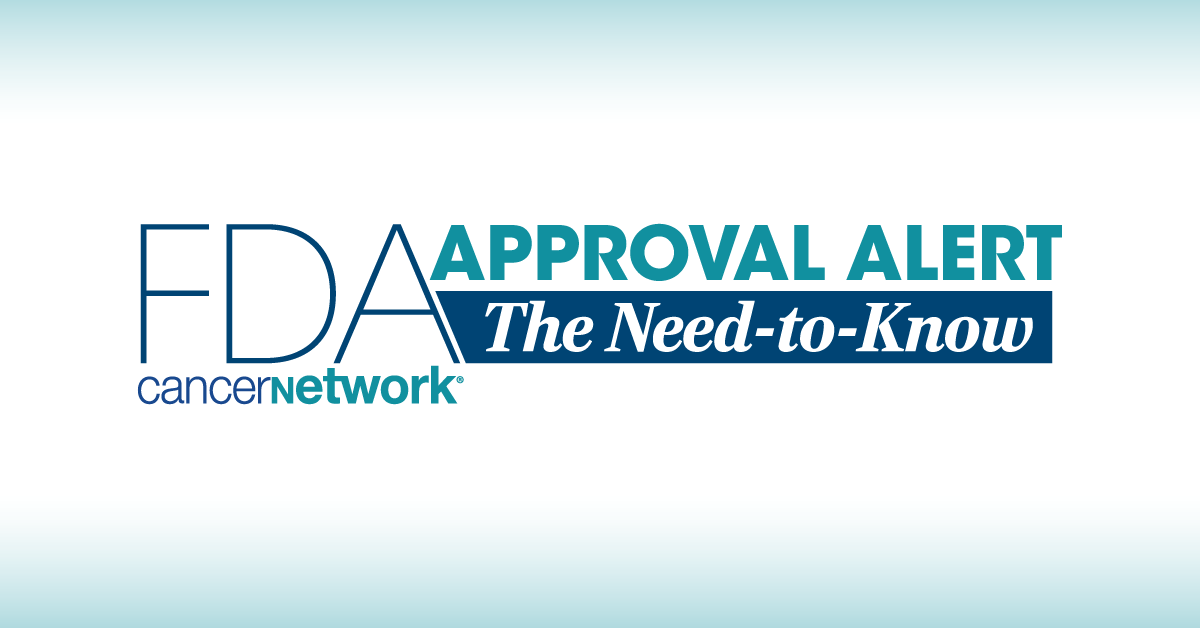FDA Approves Bortezomib Injection in Multiple Myeloma/MCL
A ready-to-use subcutaneous or intravenous injection of bortezomib for multiple myeloma and MCL has been approved by the FDA.
A ready-to-use subcutaneous or intravenous injection of bortezomib for multiple myeloma and MCL has been approved by the FDA.

Bortezomib (Boruzu) has been approved by the FDA for ready-to-use subcutaneous or intravenous administration for patients with multiple myeloma and mantle cell lymphoma (MCL), according to a press release from Amneal Pharmaceuticals and Shilpa Medicare Limited.1
The reference bortezomib (Velcade) is also used to treat multiple myeloma and MCL in combination with other treatments. It is a lyophilized powder that requires reconstitution before use. Bortezomib injection is expected to be ready for use in the second quarter of 2025, with a unique J-code.
"We are building a distinct branded oncology injectable portfolio. The approval of [bortezomib injection] is our fourth 505(b)(2) injectable approval this year. These ready-to-use injectable presentations are important innovations for oncology providers as they reduce the pharmacy preparation steps for clinicians. We look forward to bringing more branded oncology products to the market for providers while expanding access for patients," Sean McGowan, vice president of Biosimilars and Branded Oncology, said in the press release.1
According to the package insert, bortezomib injection is for subcutaneous or intravenous use only, with each having a different final concentration.2 The dosage currently comes in a 3.5 mg/1.4 m: single-dose vial. The recommended dose is 1.3mg/m2 given as a 3 to 5 second bolus intravenous injection or subcutaneous injection.
Additionally, if patients are being treated for multiple myeloma, If patients have hepatic impairment, a lower starting dose is recommended for moderate or severe disease. Additionally, each dose must be individualized to prevent an overdose.
If patients have a hypersensitivity to bortezomib, boron, or mannitol not including local reactions, but that of anaphylaxis, there is a contraindication for this treatment. It is also contraindicated for intrathecal administration.
Warnings and precautions outlined in the package insert include peripheral neuropathy, to be managed with dose modification or discontinuation. If severe neuropathy is pre-existing, patients should only be given treatment after a risk-benefit assessment. Other warnings and precautions included hypotension, cardiotoxicity, pulmonary toxicity, posterior reversible encephalopathy syndrome, and gastrointestinal toxicity.
The most common adverse effects observed in 20% or more of patients included nausea, diarrhea, thrombocytopenia, neutropenia, and peripheral neuropathy.
Patients taking CYP3A4 inhibitors should be closely monitored, and those taking CYP3A4 inducers should avoid concomitant use. For patients with diabetes, close blood glucose monitoring should occur, and, if needed, an adjustment to antidiabetic medication.
"This second [new drug application] approval in the [United States] market from our novel injectable portfolio is a testament to our capabilities and commitment to introduce pharmacy-efficient solutions that enhance preparation and have the potential to reduce patient wait times. This development exemplifies Shilpa’s constant endeavor to work towards introducing novel first-of-its-kind pharmaceutical products that help improve the healthcare requirements of a large patient pool," Vishnukant Bhutada, managing director of Shilpa Medicare, concluded in the press release.1
References
- Amneal and Shilpa announce U.S. FDA approval of BORUZU™, the first ready-to-use version of bortezomib for subcutaneous administration. News release. Amneal and Shilpa. September 5, 2024. Accessed September 6, 2024. https://shorturl.at/lcUus
- Shilpa and Amnel. Borzu; Package Insert. Accessed September 6, 2024. https://shorturl.at/rd9Xd
Navigating AE Management for Cellular Therapy Across Hematologic Cancers
A panel of clinical pharmacists discussed strategies for mitigating toxicities across different multiple myeloma, lymphoma, and leukemia populations.